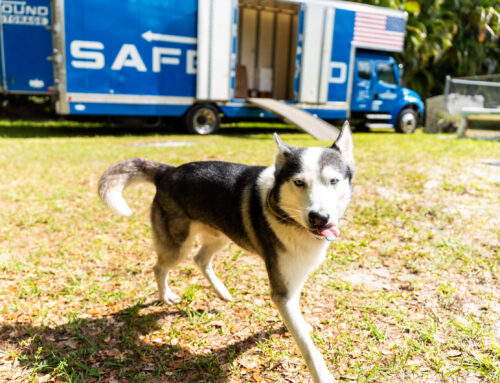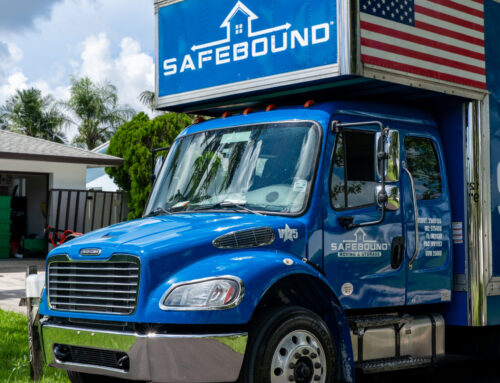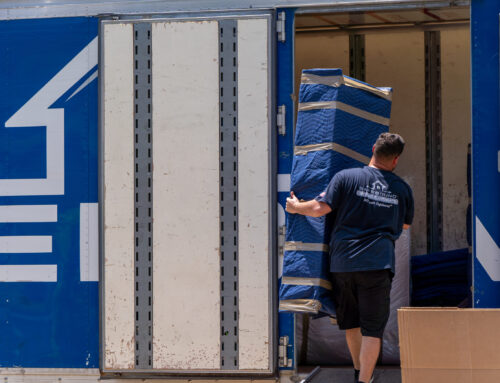How To Move With Kids
If you want to learn how to move with kids, there are a few basic principles that you should stick to. Obviously, you need to research schools and babysitters. And our trusted moving company can help you with the logistics of your move. But what can you do to help your kids have a smooth move?
General Tips
First, you want to tell them early. The move shouldn’t come as a surprise to your child, no matter how old they are. Moves are a big deal and can be more emotionally volatile for children.
Speaking of emotions, you’re also going to want to validate their feelings. Some older children, especially moody teenagers, may scream and yell at the parents who decided to move. That’s okay. Remember, they’re kids and still don’t know how to express their emotions in a healthy manner. A good response to this behavior is to tell them that you feel uneasy about the move too, that you have anxieties, that you’ll miss the neighbors, but that you’re ultimately excited for the move.
A good way to help kids feel better about the move, no matter their age, is to make them feel involved. For example, young kids can decorate moving boxes with stickers and older kids can pack their own rooms. Remind them that they’ll have a new room to decorate at the new house.
For younger kids who are especially anxious about moving, read books or watch movies with characters moving. They can see how the characters were anxious, like them, but ended up happy. Also, with younger kids, stick to their routines. Routines keep everyone, no matter what age, sane and secure.
Moving with Babies & Toddlers
Moving with kids this young isn’t incredibly challenging. They haven’t established deep connections with friends or attachments to their surroundings like parks quite yet. As long as their people — mom, dad, brothers, and sisters are coming — they should be pretty easy. However, there are some things you should remember.
Kids this age need plenty of attention! Even among the hustle and bustle of packing, take plenty of breaks to get outside and help your kid burn off some of their energy. Simple explanations will go a long way. Of course, it depends on how verbal the child is. But they should be made aware that they’ll have a new bedroom and that mom and dad are coming along, too.
Also, you’re going to want to pack their bedroom last and unpack it first. Preferably, you’ll pack a bag of “can’t sleep without” items like their favorite bed sheets, stuffed animals, and familiar pillows. In a new home, these familiar things will make them feel safer on that first night. Like we mentioned earlier, much like moving with dogs, you want to stick to routines.
Finally, you absolutely have to baby-proof the new home as soon as possible. Pad the edges and corners are padded, block open outlets, latch drawers and doors shut, and remove harmful plants like poison ivy from the yard.
Moving With Younger Kids
For this age group, a lot of the same rules for toddlers apply here. You want to be honest and communicative with them. You’ve got to tell them what’s happening. Because they’re at that inquisitive age, they’ll likely have a lot of questions. So it’s important to be clear about what’s changing, such as a new school and what’s staying the same such as, “Your bed is coming.” Speaking of beds, the last to pack, first to unpack rule for toddlers’ bedrooms applies here, too.
Kids this age overhear more than you might think, so you have to be careful about expressing your frustration or anxiety about the move. You should talk about the move only positively around them. They pick up on your tone and are developing their emotional intelligence. They can easily misinterpret your words if you’re frustrated.
One way to make them feel more comfortable about this transition period is to show them as much as possible about the new house, neighborhood, and school. If possible, visit the new house with them. Show them where their bedroom will be. Take a drive around the neighborhood and visit the local park. If the move is long-distance and you can’t get there easily, use Google Earth.
Kids this age will love to “help.” They can pack their toys and books and choose what they want to keep. They just want to feel involved. If you need to focus and get some serious work done, moving provides a great outlet for kids. They love boxes! Let them build forts and play hide and seek.
Another great tip for moving with kids is to teach them how to meet new children. They’re leaving their buddies at school and will need to create new relationships to make their new house feel like a home.
Moving With Older Kids
Ah, yes. Pre-teens and teenagers are boiling over the brim with feelings and crises daily. They’re learning how to be their own person, and they likely have a few close friends they feel they can’t live without. What’s important for their sanity (and yours) is to validate their feelings.
It might feel like the world is ending for them because it is to some extent. If this is their first move, they’re leaving everything they’ve ever known. So don’t take your teen’s emotions personally if they blow up and get mad at you for forcing them to leave their friends, schools, and clubs. Tell them that you’ll miss your friends and neighbors, too, but remind them how exciting it will be to be in a new place surrounded by new people. Although it will be scary, there’s nothing but new opportunities for them. Let them say goodbye to their friends, even offer to host a going-away party, and remind them they can stay in touch easily with today’s technology.
Lastly, schedule the move for summertime. It’ll be a lot easier for kids to acclimate to a new school if they’re starting the new school year with their peers rather than jumping into the semester midway through. Also, if they show any interest, get them involved in sports and clubs in the new town.
Moving with kids adds another layer of worry to an already stressful time. But if you follow some of these “How To Move With Kids” tips, you and your family will be just fine.





